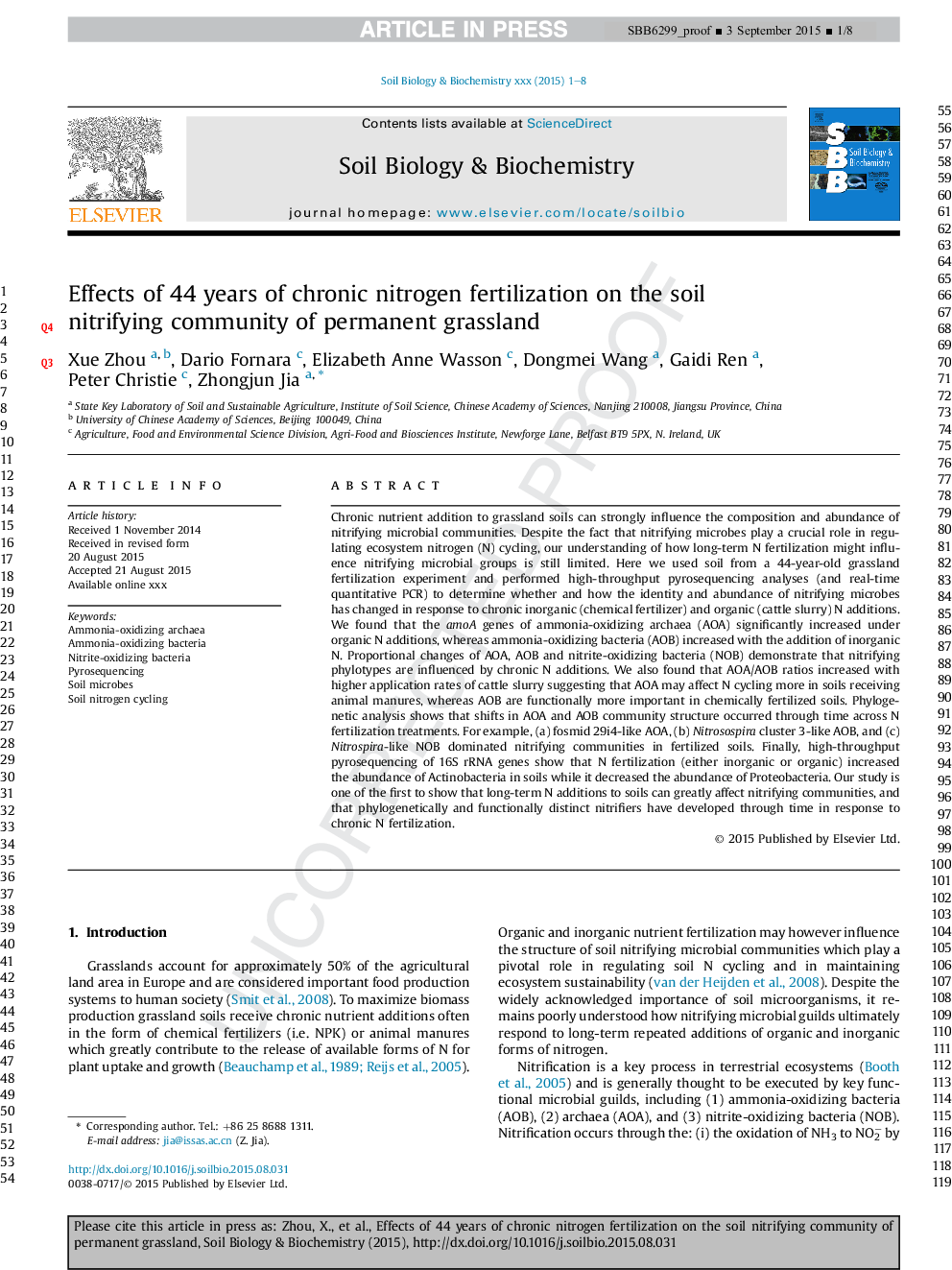| کد مقاله | کد نشریه | سال انتشار | مقاله انگلیسی | نسخه تمام متن |
|---|---|---|---|---|
| 8363758 | 1542593 | 2015 | 8 صفحه PDF | دانلود رایگان |
عنوان انگلیسی مقاله ISI
Effects of 44 years of chronic nitrogen fertilization on the soil nitrifying community of permanent grassland
ترجمه فارسی عنوان
تأثیر 44 ساله کود نیتروژن مزمن بر روی جمعیت نیتریفیون خاک از مزرعه دائمی
دانلود مقاله + سفارش ترجمه
دانلود مقاله ISI انگلیسی
رایگان برای ایرانیان
کلمات کلیدی
موضوعات مرتبط
علوم زیستی و بیوفناوری
علوم کشاورزی و بیولوژیک
دانش خاک شناسی
چکیده انگلیسی
Chronic nutrient addition to grassland soils can strongly influence the composition and abundance of nitrifying microbial communities. Despite the fact that nitrifying microbes play a crucial role in regulating ecosystem nitrogen (N) cycling, our understanding of how long-term N fertilization might influence nitrifying microbial groups is still limited. Here we used soil from a 44-year-old grassland fertilization experiment and performed high-throughput pyrosequencing analyses (and real-time quantitative PCR) to determine whether and how the identity and abundance of nitrifying microbes has changed in response to chronic inorganic (chemical fertilizer) and organic (cattle slurry) N additions. We found that the amoA genes of ammonia-oxidizing archaea (AOA) significantly increased under organic N additions, whereas ammonia-oxidizing bacteria (AOB) increased with the addition of inorganic N. Proportional changes of AOA, AOB and nitrite-oxidizing bacteria (NOB) demonstrate that nitrifying phylotypes are influenced by chronic N additions. We also found that AOA/AOB ratios increased with higher application rates of cattle slurry suggesting that AOA may affect N cycling more in soils receiving animal manures, whereas AOB are functionally more important in chemically fertilized soils. Phylogenetic analysis shows that shifts in AOA and AOB community structure occurred through time across N fertilization treatments. For example, (a) fosmid 29i4-like AOA, (b) Nitrosospira cluster 3-like AOB, and (c) Nitrospira-like NOB dominated nitrifying communities in fertilized soils. Finally, high-throughput pyrosequencing of 16S rRNA genes show that N fertilization (either inorganic or organic) increased the abundance of Actinobacteria in soils while it decreased the abundance of Proteobacteria. Our study is one of the first to show that long-term N additions to soils can greatly affect nitrifying communities, and that phylogenetically and functionally distinct nitrifiers have developed through time in response to chronic N fertilization.
ناشر
Database: Elsevier - ScienceDirect (ساینس دایرکت)
Journal: Soil Biology and Biochemistry - Volume 91, December 2015, Pages 76-83
Journal: Soil Biology and Biochemistry - Volume 91, December 2015, Pages 76-83
نویسندگان
Xue Zhou, Dario Fornara, Elizabeth Anne Wasson, Dongmei Wang, Gaidi Ren, Peter Christie, Zhongjun Jia,
